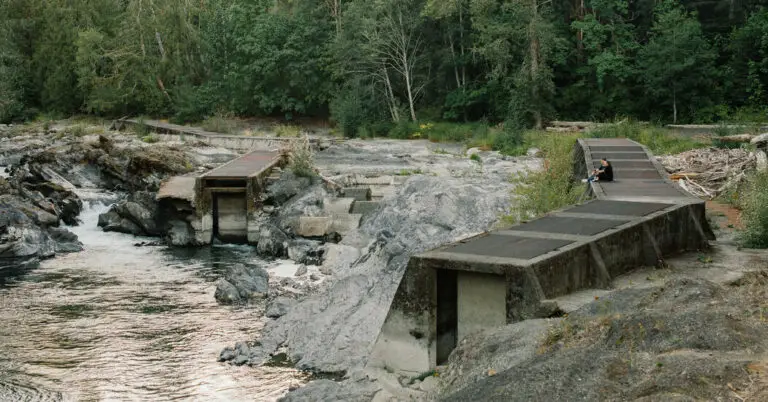Mystery Surrounds Massive Die-off of Salmon and Trout in Canadian River
Once abundant with salmon, the Cowichan River in Canada’s Vancouver Island is facing a perplexing crisis. Elderly residents remember a time when the river was so teeming with fish that crossing it was like stepping on fishy steppingstones. Even celebrities like John Wayne and Bing Crosby frequented the Cowichan Bay for fly-fishing. However, recent events have cast a shadow over this once-vibrant ecosystem.
In a shocking turn of events, hundreds of young salmon and trout were discovered dead in the river last month. This massive die-off, the most significant in living memory, prompted immediate investigation. The cause of this calamity remains elusive, though government officials stumbled upon partially treated wastewater in the river weeks after the fish carcasses were spotted. However, conclusions about its impact are yet to be drawn. Local scientists are pointing fingers at a bigger culprit: climate change. The increasing frequency of droughts and heatwaves attributed to climate change has been devastating to salmon populations in British Columbia.
Amidst a summer of global catastrophes for Canada, the effects of climate change have made their presence felt across the nation. From the Pacific Coast’s Cowichan Valley to the Atlantic’s Halifax, and even the fringes of the Arctic Circle, the reach of climate change’s impact is undeniable. While the focus has largely been on the raging wildfires, the plight of the Cowichan River hits home for the people in the Cowichan Valley.
The situation came to light when a biologist, who grew up along the river, took a harrowing swim downstream from where the dead fish were initially found. His discovery of more dead fish in river pools and further downstream in “barren zones” has shaken him to the core. The cause remains elusive, and the situation has only worsened due to the concurrent extreme drought and heatwave on Vancouver Island, a region historically known for its mild climate.
The story of the Cowichan River holds a mirror to the larger challenges facing Canada this summer. The country has experienced a string of extreme weather events, including record-breaking temperatures and devastating wildfires. The fires have consumed a landmass equivalent to Georgia and forced massive evacuations. Experts are urging a reevaluation of forest management and firefighting strategies.
In the Cowichan Valley, the impact of a provincewide drought is most vividly seen in the river that has sustained Indigenous communities for centuries. The Cowichan River’s ecosystem, once robust, now relies heavily on human intervention to survive. Climate change has disrupted the balance, leading to events like the heartbreaking fish die-off.
The community’s bond with the river is profound, rooted in culture and spirituality. Chief Hwitsum of the Cowichan Tribes emphasizes that the river is considered family, and its well-being is their responsibility.
The story of the Cowichan River’s decline is deeply entwined with human activity. Logging, beginning in the 19th century, has changed the landscape and the river’s flow. The construction of a weir for a paper mill disrupted natural water cycles. Old-growth trees that kept the river cool and helped manage rainfall were lost to logging. The river’s shape has changed, becoming shallower and warmer, detrimental to the cold-water fish.
This summer, the situation reached a tipping point. Severe drought led to restricted water releases from Lake Cowichan, exacerbating the crisis. Climate projections indicate that more human intervention will be needed to keep the river alive in the face of hotter, drier conditions.
In this changing world, nature’s ability to self-regenerate is compromised by human actions. The Cowichan River’s struggles stand as a stark reminder that the environment’s delicate balance can be disrupted beyond repair if we don’t act responsibly.

